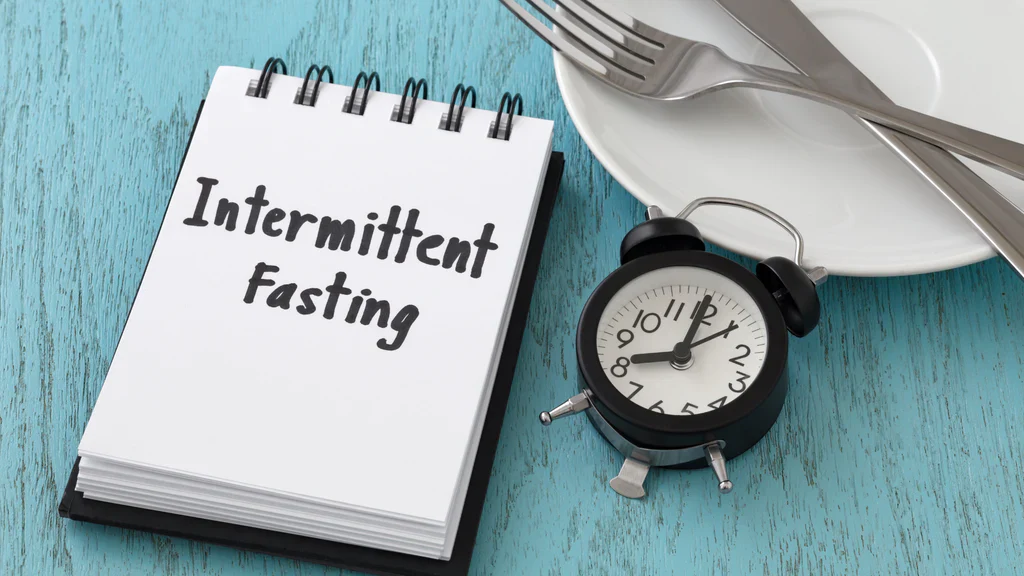Introduction to Intermittent Fasting
Intermittent fasting has taken the health and wellness world by storm. If you’ve been scrolling through social media, chances are you’ve stumbled upon countless influencers swearing by its benefits. But what exactly is this trendy eating pattern? Is it just another diet fad or a legitimate approach to improving your health?
For centuries, people have practiced various forms of fasting for religious or spiritual purposes. Now, science is uncovering how timed eating can impact our bodies in remarkable ways. Picture this: a way to enjoy food while also enhancing your overall well-being! Intrigued yet? Let’s dive into the fascinating world of intermittent fasting and discover if it really works for those seeking better health through dietary changes.
The Science Behind Intermittent Fasting
Intermittent fasting isn’t just a trend; it’s rooted in biology. When you fast, your body undergoes significant changes at the cellular level. Hormones like insulin drop, making fat stores more accessible for energy.
Additionally, fasting triggers autophagy—your body’s way of cleaning out damaged cells and regenerating new ones. This process is vital for maintaining health as we age.
Studies show that intermittent fasting can enhance metabolic flexibility. It encourages your body to switch efficiently between burning carbohydrates and fats for fuel, promoting weight loss.
Moreover, research indicates potential benefits on brain health. Fasting may increase the production of brain-derived neurotrophic factor (BDNF), which supports neuron growth and reduces the risk of neurodegenerative diseases.
With these scientific insights, it’s clear that intermittent fasting operates beyond mere calorie restriction; it taps into fundamental biological processes that could revolutionize how we approach our diet and overall health.
Different Types of Intermittent Fasting
Intermittent fasting comes in various forms, each catering to different lifestyles and preferences. One popular method is the 16/8 approach. Here, you fast for 16 hours and eat within an 8-hour window. This can be as simple as skipping breakfast.
Another option is the 5:2 diet, where you consume a regular diet five days a week but limit calorie intake to around 500-600 calories on two non-consecutive days.
For those who prefer longer fasting periods, there’s the Eat-Stop-Eat method. This involves fasting for a full day or up to 24 hours once or twice weekly.
The Alternate Day Fasting model takes it further by alternating between days of normal eating and complete fasting or very low-calorie consumption.
Each type has its unique appeal, making it easier for individuals to find one that fits their schedule and goals perfectly.
Benefits of Intermittent Fasting
Intermittent fasting offers a range of benefits that can enhance both physical and mental well-being. Many people experience weight loss as their bodies shift from burning glucose to fat for energy during fasting periods.
Additionally, this eating pattern may improve insulin sensitivity. Improved insulin levels help regulate blood sugar, which is crucial for maintaining energy throughout the day.
Cognitive function also sees a boost. Studies suggest that intermittent fasting can increase brain-derived neurotrophic factor (BDNF), promoting better memory and focus.
Another perk is cellular repair. During fasting, the body activates autophagy—a process where it cleans out damaged cells and regenerates new ones.
Some find intermittent fasting simplifies meal planning. With fewer meals to worry about each day, many enjoy reduced stress around food choices while still obtaining essential nutrients for overall health.
How to Get Started with Intermittent Fasting
Getting started with intermittent fasting can feel overwhelming, but it doesn’t have to be. First, choose a fasting method that suits your lifestyle. Popular options include the 16/8 method or the 5:2 diet.
Next, ease into it. If you’re used to eating frequently, begin by gradually extending your fasting window. This makes adjustment smoother and helps you listen to your body’s hunger signals.
Stay hydrated! Water is your best friend during fasting hours—sip on it throughout the day. Herbal teas and black coffee can also help curb cravings without breaking your fast.
Plan meals ahead of time for when you break your fast. Focus on nutrient-dense foods that keep you satisfied longer—think whole grains, lean proteins, healthy fats, and plenty of fruits and vegetables.
Track how you feel during this journey. Journaling can help identify what works best for you as you adapt to this new way of eating.
Common Myths and Misconceptions about Intermittent Fasting
Many people are skeptical about intermittent fasting, often due to misunderstandings. One common myth is that you can’t eat anything during fasting periods. In reality, beverages like water, tea, or black coffee are usually allowed and can help curb hunger.
Another misconception is that fasting slows down metabolism. Research shows that short-term fasting can actually boost metabolic rates temporarily. It’s not just a diet; it’s a lifestyle shift.
Some believe intermittent fasting leads to muscle loss. However, studies indicate that when done correctly alongside resistance training, it may preserve muscle mass while promoting fat loss.
Many think it’s only for weight loss. While shedding pounds is a benefit, intermittent fasting also contributes to improved mental clarity and better health markers like blood sugar levels and inflammation reduction.
Safety and Precautions for Intermittent Fasting
Intermittent fasting can be a powerful tool for many, but safety should always come first. Listening to your body is essential. If you feel dizzy or weak, it may be time to reassess your approach.
Consulting with a healthcare professional before starting any new diet regimen is advisable, especially if you have pre-existing conditions such as diabetes or eating disorders. They can provide personalized advice tailored to your health needs.
Hydration plays a crucial role during fasting periods. Drinking plenty of water helps maintain energy levels and supports overall well-being.
Consider the timing of your fasts carefully. Avoid scheduling them around intense workouts or stressful days at work when energy levels are vital.
Recognizing that intermittent fasting isn’t suitable for everyone is key. Pregnant women and those with certain medical issues should prioritize their nutritional needs above all else.
Personal Experiences and Success Stories
Intermittent fasting has garnered a lot of attention, and many individuals have shared their journeys with this approach to food. Personal experiences vary widely, but the common thread is often one of empowerment and transformation.
Take Sarah, for instance. She struggled with her weight for years before discovering intermittent fasting. By following the 16:8 method—eating during an eight-hour window each day—she found it easier to control her calorie intake without feeling deprived. Over six months, she lost 20 pounds and reported increased energy levels throughout her day.
Then there’s Mark, who initially tried intermittent fasting as a way to improve his mental clarity at work. He opted for the 5:2 diet, where he ate normally five days a week while restricting calories on two non-consecutive days. Not only did he shed excess pounds over time, but he also noted improved focus during those fasting periods.
These are just two examples among countless success stories out there. Many people appreciate how intermittent fasting simplifies meal planning; fewer meals mean less time spent cooking or preparing snacks constantly throughout the day.
Additionally, some report positive effects beyond weight loss—such as better blood sugar regulation and reduced inflammation markers in their bodies after consistent practice of intermittent fasting.
While individual results may vary based on personal goals or health conditions, these narratives illustrate that intermittent fasting can be more than just another diet trend; it possesses potential benefits worth exploring further by anyone seeking improvements in their health journey through mindful eating habits.










